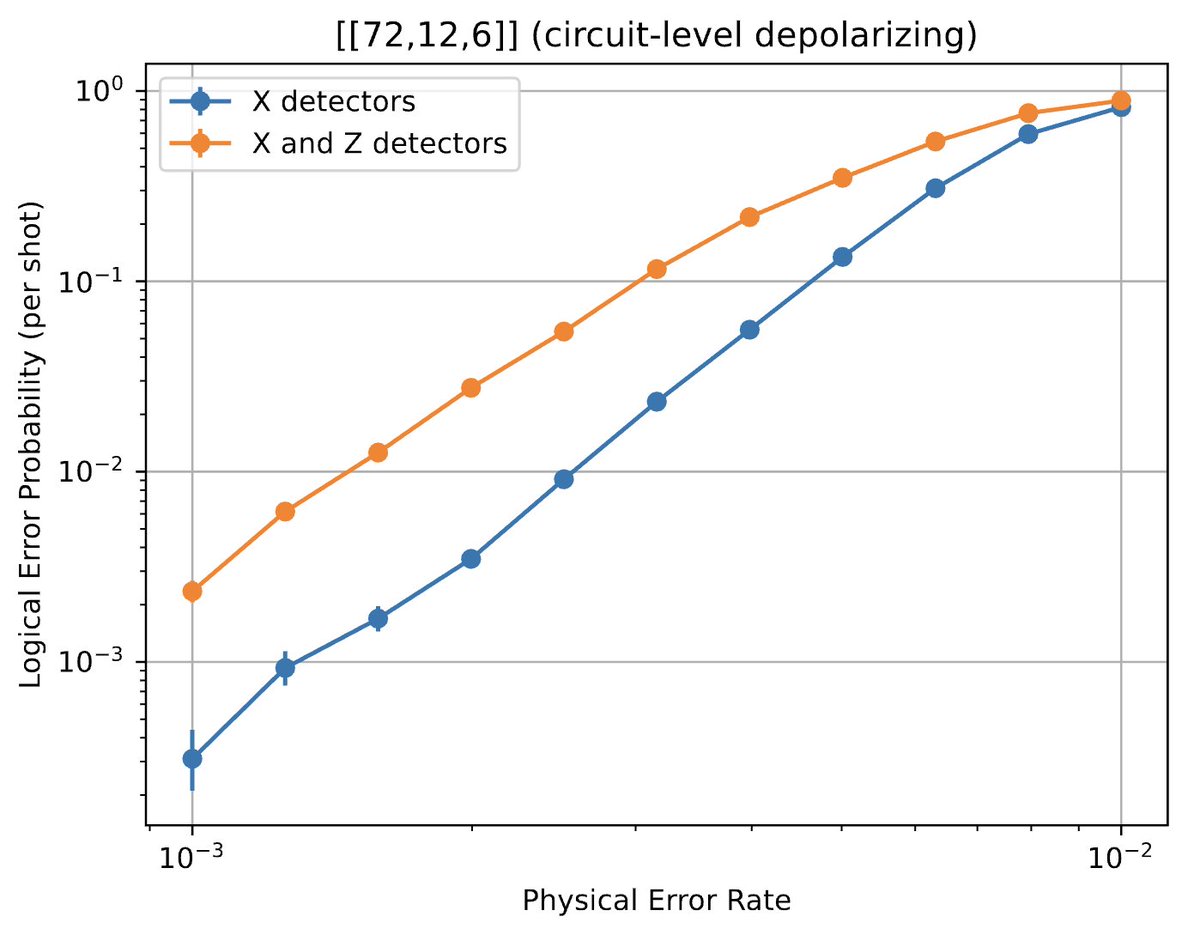
Oscar Higgott
@oscarhiggott
Followers
945
Following
1K
Statuses
110
Research Scientist @GoogleQuantumAI working on quantum computing and quantum error correction | PhD from @UCLQuantum
London, England
Joined August 2010
New paper on arXiv today with @nikobreu: We construct families of Floquet codes derived from closed hyperbolic surfaces and show that they outperform honeycomb codes and surface codes even at high physical error rates. @UCLQuantum @BristolUniMaths
2
22
130
RT @PRX_Quantum: New construction of Floquet quantum error-correction codes derived from the tiling of hyperbolic surfaces can be up to 100…
0
9
0
RT @KJSatz: Check out our latest preprint @GoogleQuantumAI pushing the surface code to the next level! - Below threshold (Λ > 2) - Distanc…
0
24
0
RT @MikeNewmQuantum: Houston, we are below the quantum error correction threshold! 🚀 In “Quantum error correction below the surface code t…
0
134
0
@letonyo Really nice to see a detailed analysis of this problem! We also noticed it in and made this plot to visualise it for the toric code (see App B). We used sum-product BP so the information spread was heavily reduced (not eliminated) beyond the cycle length.
0
0
2
@CraigGidney @earltcampbell @QuantumGizmos @nikobreu The reason that giving BPOSD both X and Z bases together reduces accuracy for the bivariate bicycle codes (shown here) is that pairs of Y errors cause 4-cycles in the Tanner graph (bad for BP), since overlapping X and Z stabilisers must overlap on at least two qubits to commute.
0
0
2
RT @dsfranca: 🚨 Deadline approaching! Less than a month left to submit your papers to QCTIP24 🚀. February 5th is the last day! We're excite…
0
10
0
@letonyo @nikobreu @UCLQuantum @BristolUniMaths Interesting question. I'm not sure, but perhaps it is possible to Floquetify quantum pin codes (as suggested by @CVuillot in .
0
0
4
@CraigGidney Agreed, definitely easier to implement using an ion trap than a superconducting chip. For the larger codes, a modular architecture with long-range links between small Euclidean chips would have the right connectivity.
1
0
0
@CraigGidney Thanks! In the figures of the Bolza Floquet code, opposite sides of the tiling are identified. E.g. the grey highlighted paths in this diagram are homologically non-trivial cycles.
1
0
1
RT @oscarhiggott: This has now been published in PRX: I've also now released an open-source implementation of beli…
0
2
0
RT @PhysRevX: New, efficient, classical software for controlling quantum error-correcting codes exploits the structure of relevant noise mo…
0
8
0
RT @earltcampbell: Phys. Rev. X 13, 031007 (2023) - Improved Decoding of Circuit Noise and Fragile Boundaries of Tailored Surface Codes h…
0
5
0






